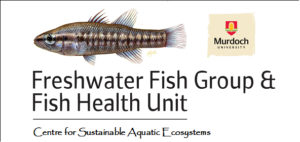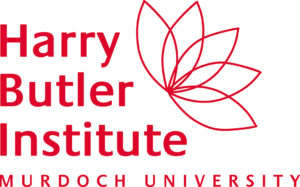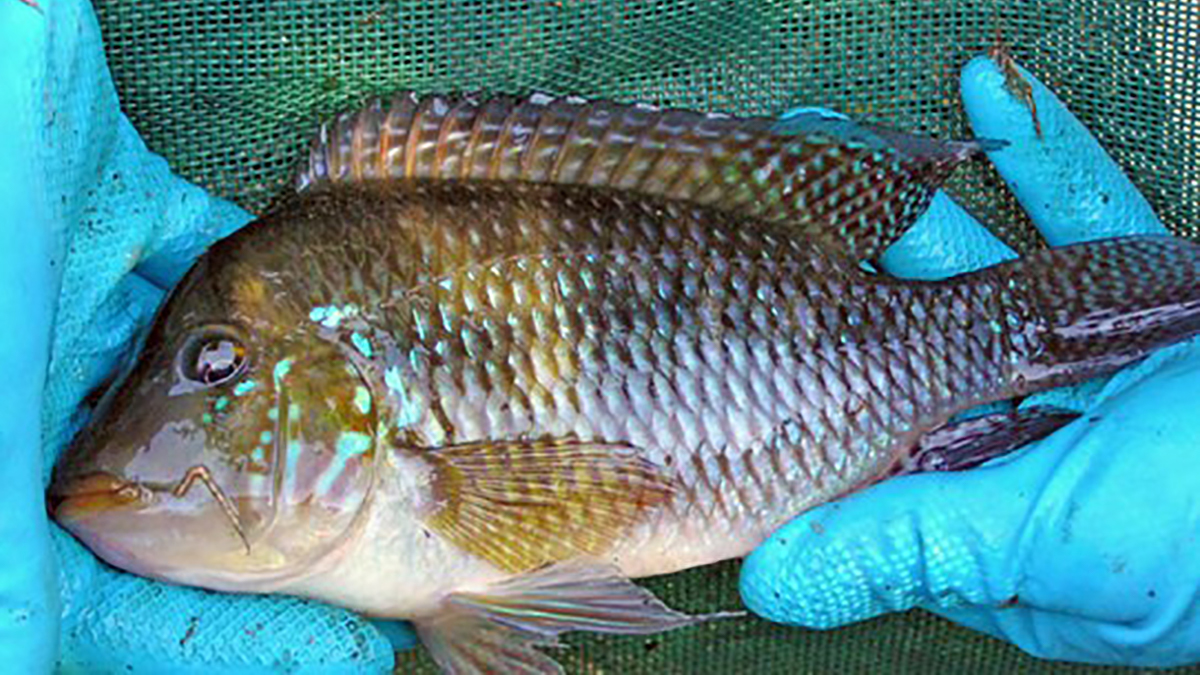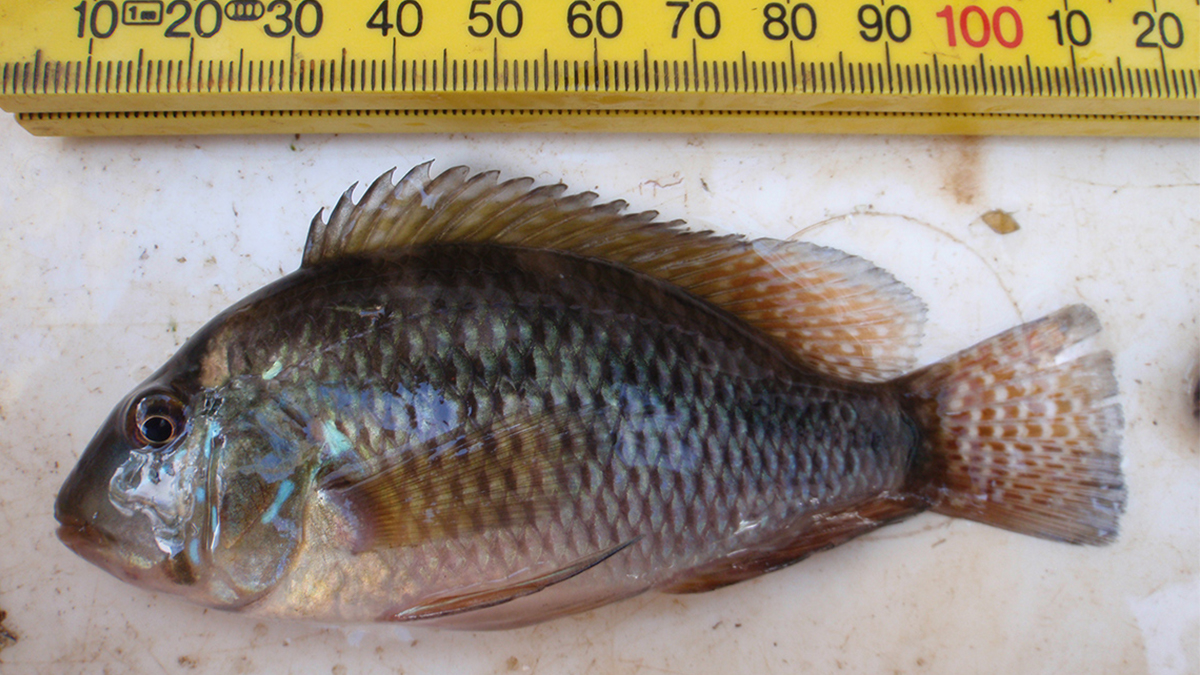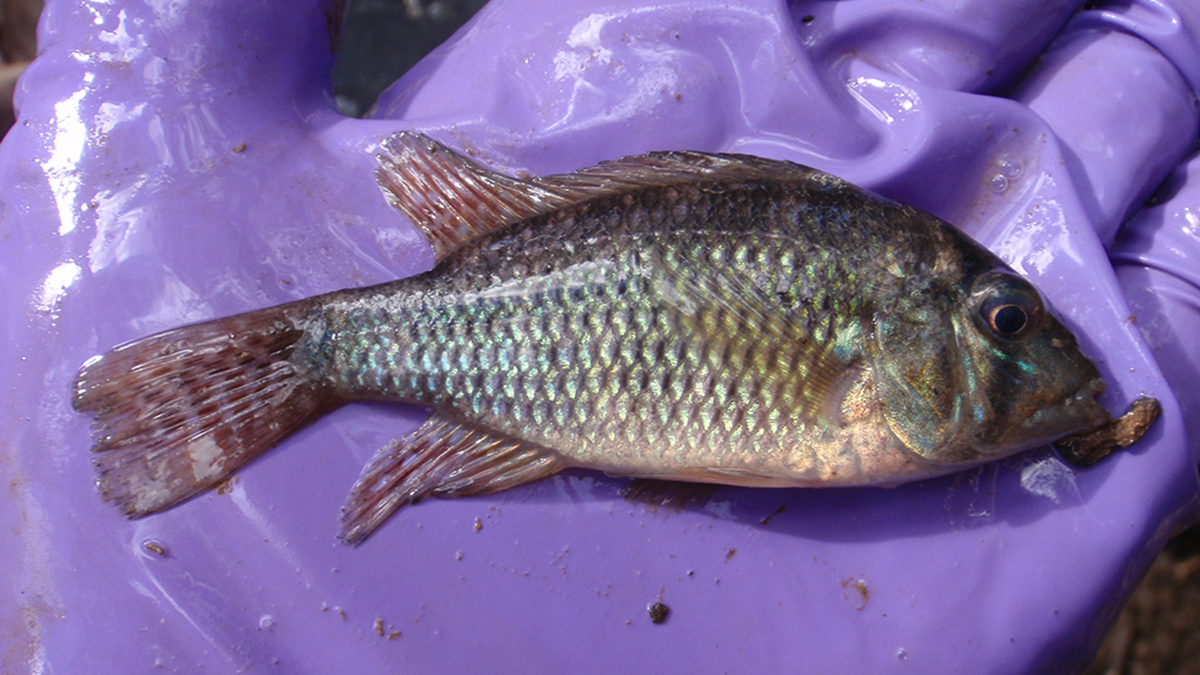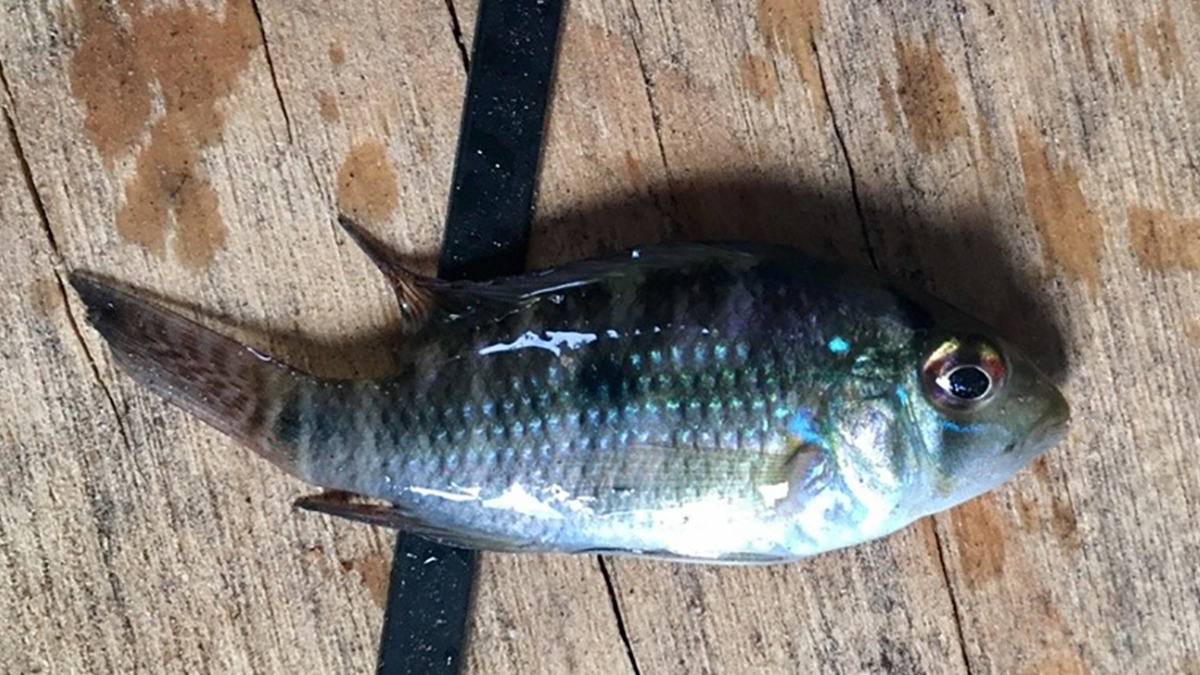Pearl cichlid - Geophagus brasiliensis
This page was created in partnership with the Freshwater Fish Group and Fish Health Unit at Murdoch University
Identification
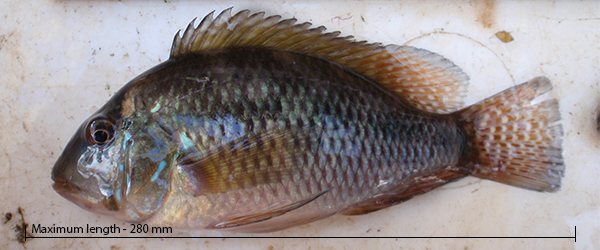
The pearl cichlid is an extremely aggressive freshwater fish native to South America, and a popular aquarium species owning to its bright turquoise spots and bands present of the fins and face (particularly in males) - which is the obvious source of recent collections in south-west rivers.
They are a moderate-sized fish (large compared to most native freshwater fish species), with the largest recorded size being recorded in the Bennett Brook catchment, reaching a maximum size of >30 cm. However they are typically encountered between 5 and 15 cm in southwest waters. They are reported to live up to 15 years.
Distribution
Within Western Australia they have only been reported from a few lakes and wetlands, and in the Bennett Brook, Swan River and Canning River systems (including Bannister Creek and Bickley Brook), however given their invasive nature, including a high tolerance to salinity, they are expected to spread rapidly.
Habitat
They thrive in both riverine and wetland habitats. Tolerant of a range of water temperature (10-30 degrees) and salinity equivalent to seawater (i.e. up to 36 ppt). This tolerance has enabled them to spread into other systems in the Swan-Canning catchment.
Biology
In Western Australia, they spawn from late spring through to early winter, reported to produce clutches of around 150-200 offspring.
They feed predominantly on vegetation and detritus, however terrestrial invertebrates (insects and small native crayfish) become targeted more as fish reach larger sizes. They often feed by sifting organisms from the substrate (often called pearl eartheaters due to this behaviour).
Conservation status
They are an exotic species, native to South America. They are known to predate on and compete with native species and are thus a threat to the native ecosystems in which they invade.
Management
Unfortunately there is little that can be done to eliminate this pest once established in an area. The only effective management is prevention (educating people to not release them into the wild) and early intervention. If you see the species in an area yet identified, please contact Fisheries 1800 815 507 or at biosecurity@fish.wa.gov.au.
Further information
Contact the department’s River Science team, or the Murdoch Freshwater Fish Group via email: fish@murdoch.edu.au, or go to their website: www.freshwaterfishgroup.com
